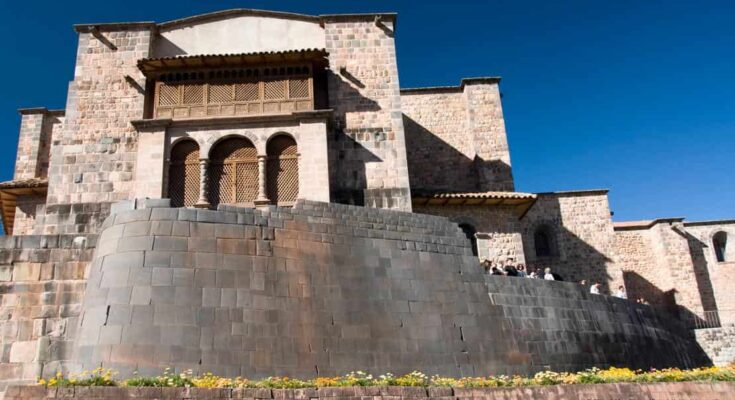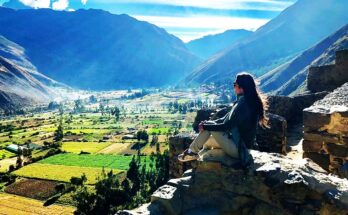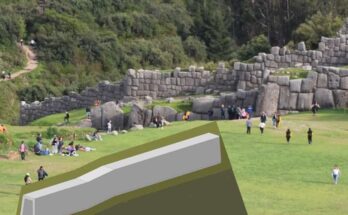For centuries, historians, archaeologists, and adventurers have speculated about the existence of a mysterious labyrinth beneath the ancient Inca capital, Cusco. Now, a team of Peruvian archaeologists has announced groundbreaking findings that may confirm the existence of this subterranean network known as the Chincana. This discovery sheds light on the ingenuity of the Inca civilization and provides new insights into their architectural and engineering prowess.
The Chincana, as described by researchers Jorge Calero Flores and Mildred Fernández Palomino, is an extensive system of tunnels stretching approximately 1,750 meters. This remarkable network begins at the Temple of the Sun, or Coricancha, and extends to the imposing fortress of Sacsayhuamán. The researchers revealed their findings during a press conference held at the Provincial Municipality of Cusco, presenting evidence of the tunnels and their historical significance.
A System of Underground Connections
Beyond the primary tunnel that links Coricancha to Sacsayhuamán, the Chincana network includes three additional branches. These extend to different locations:
- Muyucmarca in Sacsayhuamán
- Callispuquio
- Behind the Church of San Cristóbal
This intricate system of subterranean passages highlights the advanced construction techniques of the Inca civilization. Such feats continue to amaze archaeologists and historians, as they demonstrate an understanding of engineering principles far ahead of their time.
Historical Texts and Accounts
The first phase of the research relied heavily on historical texts dating back to the 16th to 18th centuries. These documents, long considered the stuff of legends, contained detailed accounts of underground passages beneath Cusco. A particularly illuminating testimony comes from an anonymous Jesuit in 1594, who described a tunnel descending from the hilltop area near the parish of San Cristóbal. The tunnel reportedly passed beneath the bishop’s residence, behind Cusco’s cathedral, and traced a path from Coricancha to Sacsayhuamán.
Such accounts have fueled speculation for generations, inspiring treasure hunters and researchers alike. However, until now, no definitive evidence of the Chincana’s existence had been presented.
Methodical Exploration
The investigation followed a rigorous three-phase methodology:
- Document Analysis Researchers combed through centuries-old chronicles and documents to trace references to the Chincana. These texts provided clues about the potential locations and dimensions of the tunnels.
- Acoustic Surveys In the second phase, researchers used a simple yet effective technique to detect hollow spaces beneath the ground. By striking the surface with a hammer and metal plate every 50 centimeters, they identified zones of resonance indicative of cavities below.
- Ground Penetrating Radar (GPR) The final phase involved advanced technology to map the underground system accurately. Ground-penetrating radar provided a detailed view of the tunnels, confirming their layout and dimensions.
Structural Characteristics
The tunnels’ dimensions are impressive, with widths ranging from one to 2.6 meters and heights of about 1.6 meters. Researchers believe the Incas excavated these passages by digging trenches, which they subsequently reinforced with stone walls and carefully crafted roof beams. The construction method aligns with known Inca engineering practices, which combined functionality with meticulous craftsmanship.
Interestingly, the researchers discovered a recurring pattern in the construction of these underground pathways: they were often built beneath existing roads. This finding supports earlier recommendations made by Dr. Manuel J. Chávez Ballón, the “Father of Cusco Archaeology,” who suggested searching for the Chincana beneath the Inca road connecting Coricancha and Sacsayhuamán.
Significance of the Coricancha and Sacsayhuamán
The Coricancha, or Temple of the Sun, was one of the most sacred sites in the Inca Empire. Dedicated to Inti, the sun god, it served as a religious and ceremonial center. Gold-plated walls and intricate stonework adorned this magnificent structure, symbolizing the empire’s wealth and devotion.
Sacsayhuamán, on the other hand, was a formidable fortress overlooking Cusco. Its massive stone walls, built without mortar, remain a testament to the Inca’s architectural ingenuity. The connection between these two iconic sites via a subterranean network underscores their importance within the empire and suggests a strategic purpose for the tunnels.
Cultural and Historical Implications
The rediscovery of the Chincana holds immense cultural and historical value. It not only confirms the legends passed down through generations but also provides a deeper understanding of Inca urban planning and infrastructure. The tunnels may have served various purposes, such as transportation, storage, or even religious rituals.
Additionally, this discovery highlights the importance of preserving and studying Peru’s rich archaeological heritage. The Chincana serves as a reminder of the ingenuity and sophistication of ancient civilizations and the stories waiting to be uncovered beneath the surface.
Future Prospects
While the rediscovery of the Chincana is a significant milestone, much work remains to be done. Excavation and preservation efforts will require careful planning to ensure the tunnels’ structural integrity and protect them from potential damage. Advanced technologies like 3D mapping and imaging will likely play a crucial role in further exploration.
The findings also open the door to new research questions: What was the primary purpose of the Chincana? Were there additional tunnels yet to be discovered? How did the Incas achieve such precision in their underground constructions?
The rediscovery of the Chincana represents a monumental achievement in Peruvian archaeology. It bridges the gap between historical accounts and tangible evidence, bringing to life a long-lost chapter of Inca history. As researchers continue to explore and analyze this subterranean network, the world eagerly awaits new revelations about the ingenuity and legacy of the Inca civilization.



